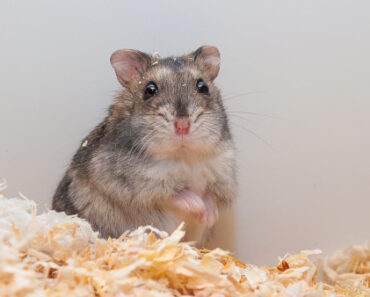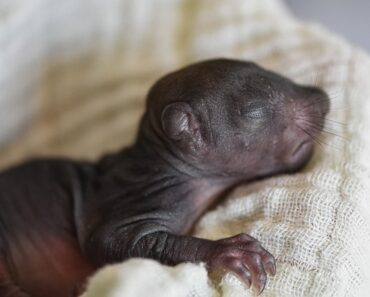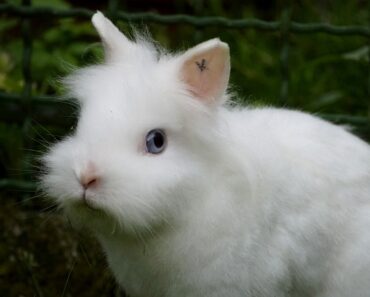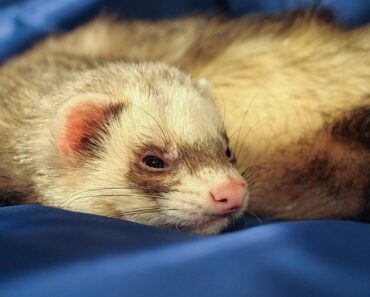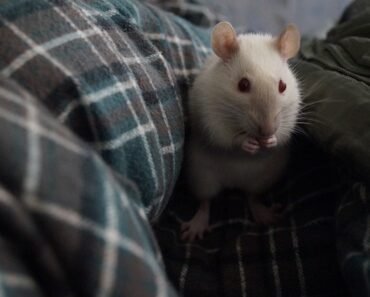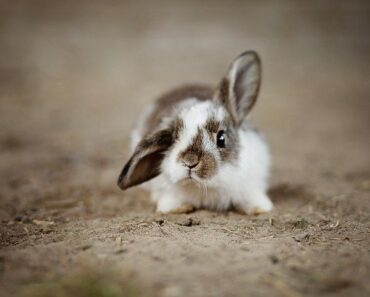The ram rabbit is recognizable at first glance by its large floppy ears. It is a particularly intelligent pet and rather easy to educate. But it does not like to be alone and needs to be taken care of.
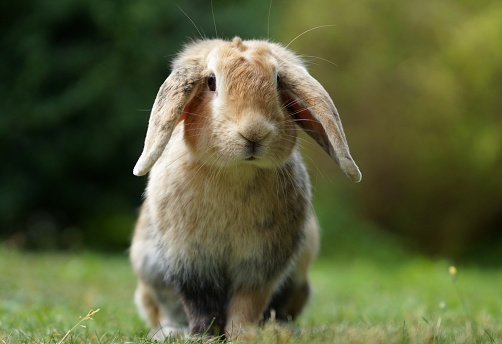
Where does the ram rabbit come from?
The ram rabbit is a descendant of the wild rabbit. It is the result of different crossbreeding that allowed the development of this particular species. We can recognize it by its large drooping ears. They hang downwards and the rabbit cannot move them.
It seems that this characteristic was developed by some rabbits that lived in captivity in small spaces. The heat and lack of space weakened the ear muscles and they ended up staying down.
British breeders chose to exploit this particularity through selections aimed at increasing the size of these drooping ears. As early as the 19th century, there were show ram rabbits with ears up to 76 cm long (from the tip of one ear to the other).
The character of the ram rabbit
The ram rabbit is a sociable and intelligent companion. They are known to be very gentle and affectionate. It is possible to have a real complicity with him when you take good care of him. If he is always alone in his cage, he can even become aggressive. He can be easily educated, is very expressive and funny. He loves to play, run and jump. He understands quickly what is allowed and what is forbidden thanks to a firm “No”. But he can repeat the same mistake several times even if he understands what he has to do. You have to be more stubborn than he is. Each animal has its own character but as a general rule, the ram rabbit is docile, sociable and very endearing.
The physics of the ram rabbit
There are different types of ram rabbits such as the cashmere ram with long hair, the English ram with very large ears, the French ram, the dwarf ram, the small ram or the Meissner ram.
The length of the ears varies according to the breed but they are systematically drooping. The French ram is rather large and weighs up to 6kg for ears that can measure up to 42 cm. Those of the English ram are even longer and can reach 64 cm. The small ram does not weigh more than 3.5 kg while the dwarf ram does not exceed 2 kg with an average ideal weight of 1.6 kg.
It can weigh between 1 and 8 kg and its life expectancy is about 8 years. Its body is stocky, massive, with drooping ears, a dense coat that can have different colors.
Depending on the breed, the hair can be more or less long but its silky coat is always very soft and dense.
The ram rabbit in everyday life
The ram rabbit can live outside if it has a shelter to protect it from the cold and bad weather. Inside a house, it needs a large cage because it is an active animal with powerful hind legs. It likes and needs to run and have fun, climb and descend slopes, hide. It can evolve in freedom but under supervision because it likes to gnaw everything within its reach. The cage must be kept clean at all times and placed in a quiet, draft-free area.
Even if it seems massive, the ram rabbit is rather fragile at the level of its skeleton. It is therefore important to avoid falls and, of course, never carry it by the ears. The ram rabbit is sensitive to heat.
The rabbit’s digestive system does not tolerate fresh food. Therefore, it must be given in limited quantities. Its basic food is good quality hay to which pellets can be added. Fresh water should be available at all times.
The beautiful floppy ears should be monitored regularly. They are susceptible to ear infections.
As for the hair, it is necessary to brush it twice a week to avoid knots and to keep a dense and soft fur.
Claws should be trimmed regularly if the rabbit cannot wear them out naturally by scratching.
This rabbit likes to have company, whether it is its owner, other rabbits or even a dog or female dog. In the latter case, the rabbit and its companion should not be left unattended.
Conclusion
The ram rabbit is a wonderful companion as soon as you spend time with him. He is affectionate, loves to play, but needs space and attention. He learns quickly and loves tender moments. He needs daily care and lots of attention to be happy.

